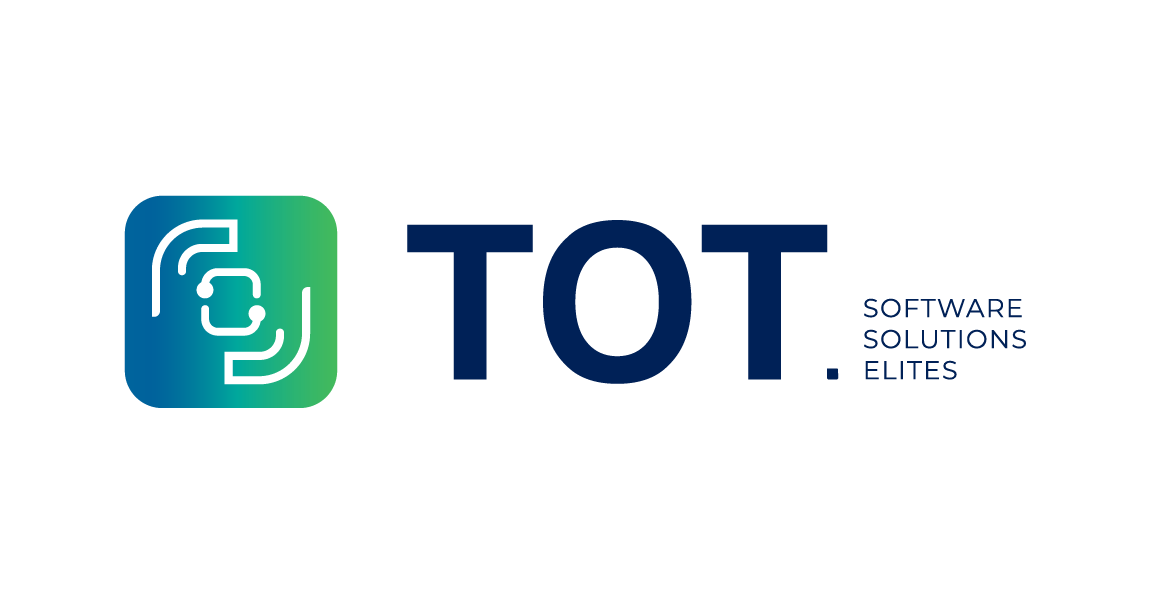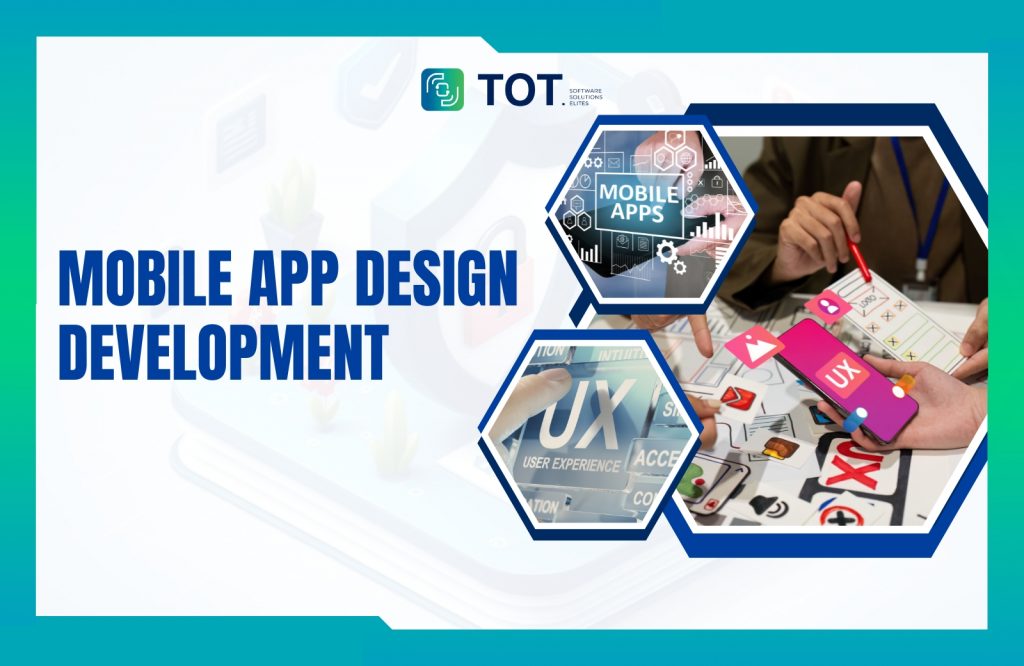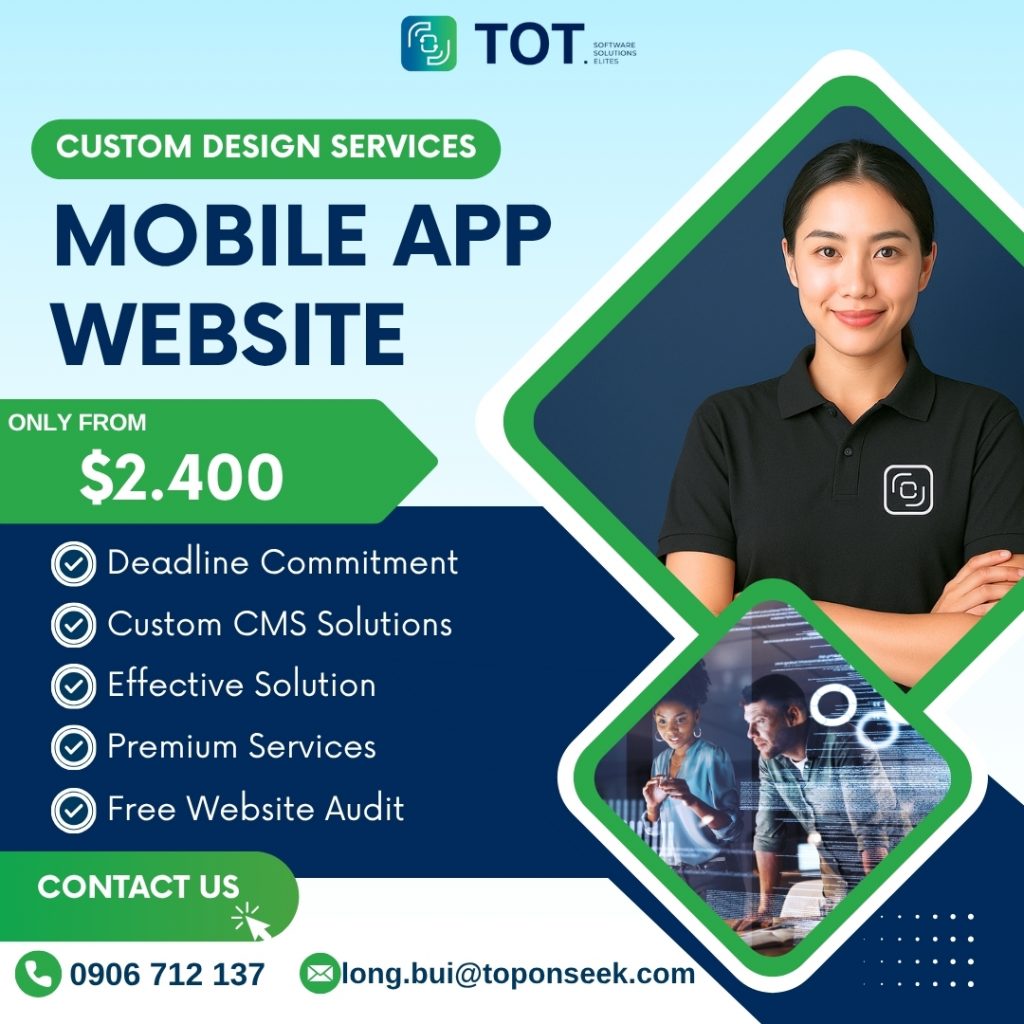Mobile app design development plays a crucial role in building applications that captivate users and support long-term business growth. With users expecting seamless experiences across every touchpoint, crafting an app that is both visually compelling and highly functional has become essential. In this comprehensive guide, TopOnTech breaks down the full design-to-development journey, offering clear steps, tools, and best practices to help you create mobile apps that deliver exceptional performance and usability.
>>> Read more:
- Top 12 Web Design Agencies in Vietnam – Trusted & Professional
- Top 15 Software Outsourcing Company in Vietnam
- Top 10 Web Agency Offshore Companies for Global Businesses
- Software Development Company in Vietnam – Top 10 Best Choices for 2025
- Top 10 IT Outsourcing Companies in Vietnam [Most Updated 2025]
What Is Mobile App Design and Development?
Mobile app design and development is the end-to-end process of creating applications for smartphones and tablets. It includes everything from defining user needs, crafting visual layouts, and building the app’s architecture to programming, testing, and deployment. A successful mobile app requires both strong UI/UX design and robust development practices, ensuring the final product is visually appealing, intuitive, fast, and reliable.
This process typically involves user research, wireframing, prototyping, coding, quality assurance, and continuous optimization after launch. Together, design and development ensure that the app not only looks good but also delivers seamless performance across different devices and operating systems.
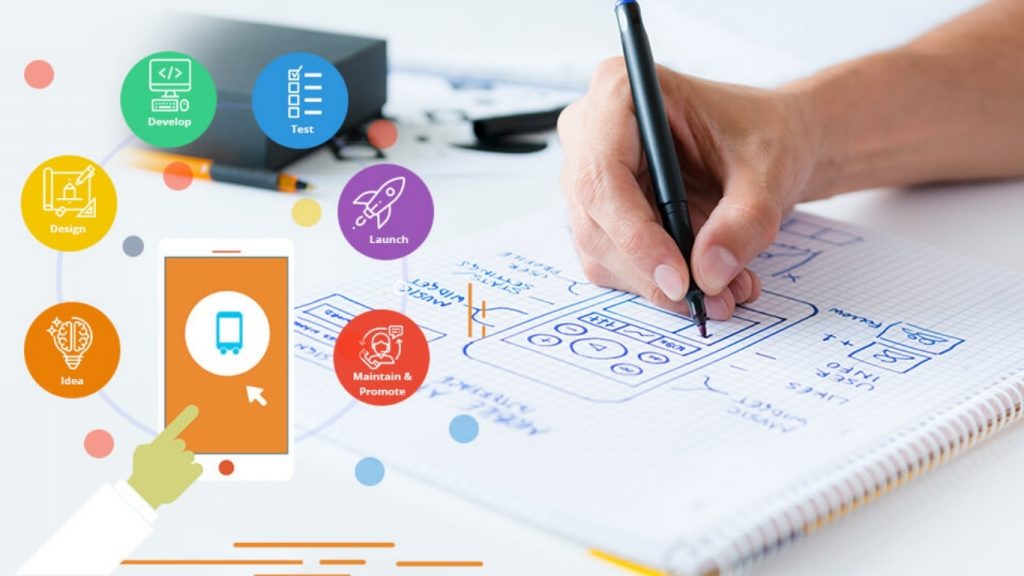
What Is Mobile App Design?
Mobile app design focuses on creating the visual and interactive elements of an application. It includes UI design (User Interface), which consists of the layout, colors, icons, and typography, as well as UX design (User Experience), which shapes how users navigate and interact with the app.
The goal of mobile app design is to build an experience that feels intuitive, consistent, and enjoyable. Designers typically create wireframes, prototypes, and high-fidelity mockups to ensure that each screen supports user goals and business objectives.
Key components of mobile app design include:
- User flow planning
- Wireframes and prototypes
- UI elements and design systems
- Interaction design and usability testing
A well-designed app improves user satisfaction, increases engagement, and boosts retention.
What Is Mobile App Development?
Mobile app development is the technical process of building and programming an application for mobile devices. Developers transform the design into a functional product using programming languages, frameworks, and development tools.
This stage includes:
- Front-end development (the user-facing side)
- Back-end development (server, database, API integration)
- Quality assurance and testing
- Deployment on app stores (Google Play, App Store)
Depending on the project, mobile apps can be built using:
- Native development
- Cross-platform frameworks
- Hybrid technologies
Mobile app development ensures the product is fast, secure, scalable, and compatible across devices.
The Relationship Between Design and Development
Mobile app design and development are closely connected. Both must work together from the very beginning to ensure the app meets user expectations, follows technical requirements, and achieves business goals. While design focuses on the app’s looks and feels, development focuses on how the app works. A strong relationship between the two ensures consistency, functionality, and user satisfaction throughout the project.
How design impacts functionality and UX
Great design has a direct impact on how well an app functions. Clear navigation, intuitive layouts, and thoughtful user flows help reduce friction and guide users naturally through the app. On the other hand, a poor design can confuse users, reduce engagement, and increase abandonment.
Design also affects:
- Feature discoverability
- App performance (e.g., optimized assets reduce loading time)
- Accessibility
- Overall user satisfaction
When design decisions are aligned with technical constraints, the final product becomes more stable, usable, and scalable.
Collaboration between designers and developers
Effective collaboration between designers and developers is essential for delivering a high-quality mobile app. Both teams must work closely from concept to launch to ensure feasibility, performance, and consistency.
Successful collaboration includes:
- Sharing insights during research and requirement analysis
- Aligning design concepts with technical capabilities
- Maintaining clear communication throughout development
- Testing prototypes together to resolve issues early
When designers and developers collaborate seamlessly, the project moves faster, the user experience improves, and the final product aligns closely with business and technology goals.
TOT implemented a comprehensive solution, starting with in-depth UX research and a complete UI/UX overhaul, modernizing the app to align with the Peugeot brand identity. By synchronously upgrading the underlying technologies, it is an effective tool for customer care and retention.
>>> Read more:
- Custom Software Development in Hanoi – Professional and Affordable Solutions
- Custom Software Development in Ho Chi Minh City – Professional, Multi-Platform Solutions

The Mazda App needed a complete redesign due to poor UX and fragmented data management. TOT conducted deep UX research and implemented a modern UI/UX overhaul. We simultaneously upgraded the technology, introducing a Microservice architecture and direct integration with Thaco Auto’s DDMS. This initiative significantly enhances the user experience, and the final product aligns closely with business and technology goals, making the Mazda App a powerful digital asset for customer service and operational efficiency.
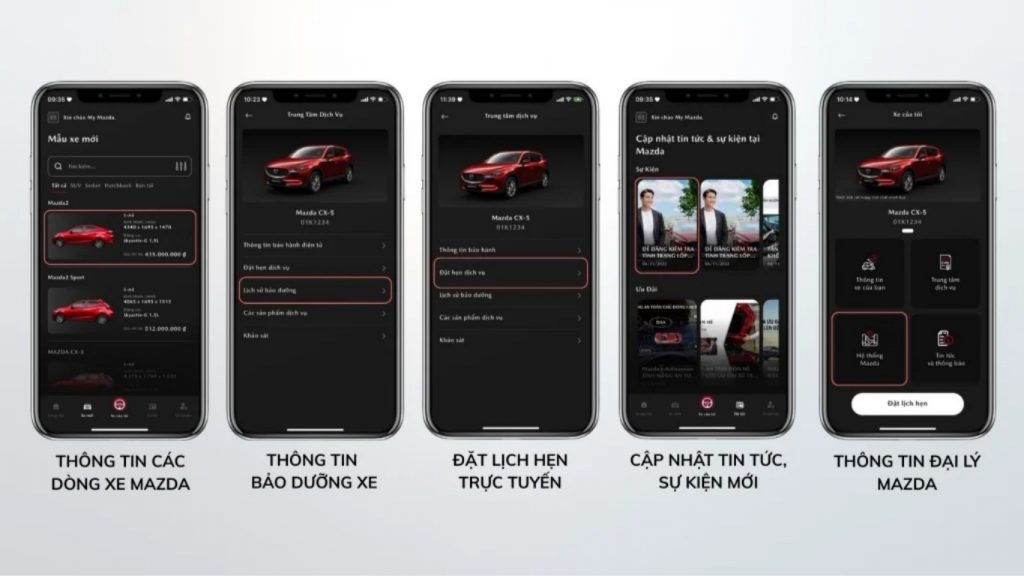
Key Stages of Mobile App Design
Mobile app design plays a crucial role in shaping how users interact with your product. A well-planned design process ensures the app is intuitive, visually consistent, and optimized for user behavior. Below are the key stages in modern mobile app design workflows.
User research and persona building
The design process begins with understanding the target audience. User research helps identify user needs, frustrations, motivations, and behaviors. Designers collect insights through surveys, interviews, competitor analysis, and market research.
Once the data is gathered, teams create user personas, which are fictional yet research-based profiles representing key user groups. Personas help guide design decisions by keeping the team aligned with real user expectations.
Strong user research and persona development result in:
- Clear understanding of what users want
- Improved feature prioritization
- Reduced design risks and assumptions
This stage ensures every design element supports actual user goals.
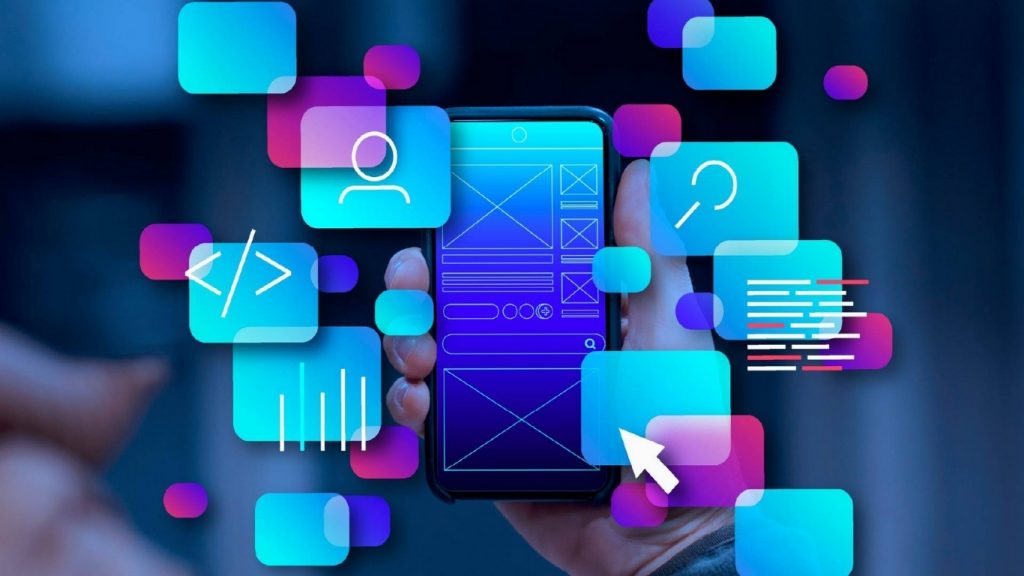
Wireframing and prototyping
Wireframes act as the structural blueprint of the app. They define page layout, navigation flow, content placement, and interaction patterns without focusing on visual style.
After wireframing, designers create interactive prototypes to simulate the user journey. Prototypes enable teams to test ideas early, validate flows, and refine usability before development begins.
Benefits of wireframing and prototyping include:
- Early detection of UX issues
- Reduced development rework
- Clear communication between designers, developers, and stakeholders
This stage ensures the app’s foundation is solid before moving into the final design.
UI/UX design principles
UI/UX design transforms wireframes into a visually polished interface. Designers apply industry-proven principles to ensure the app is both beautiful and functional.
Key principles include:
- Consistency: Unified colors, typography, spacing, and components
- Clarity: Simple navigation and easy-to-understand interactions
- Accessibility: Support for screen readers, contrast standards, and intuitive gestures
- Responsiveness: Smooth experience across screen sizes and devices
- User-centered design: Every element should serve the user’s needs
Following strong design principles results in a cohesive and engaging experience that keeps users coming back.
Usability testing and feedback
Usability testing evaluates how easily users can navigate the app and complete tasks. This stage helps designers identify friction points, confusion, or interaction issues early.
Common usability testing methods include:
- A/B testing
- Task-based tests
- Remote usability studies
Heatmaps and behavior tracking
Feedback from real users allows the team to refine workflows, improve clarity, and optimize the user journey. This step is essential for ensuring the final design is intuitive and conversion-driven.
Top design tools
Modern design teams rely on a variety of powerful tools to streamline workflows, enhance collaboration, and build scalable, consistent design systems. Among the most widely used solutions are:
- Figma: A cloud-based collaborative design platform that allows UI/UX designers, developers, and stakeholders to work together in real time. Figma supports advanced prototyping, shared libraries, and robust design system management, making it ideal for large teams that require seamless communication and version control.
- Sketch: A vector-based design tool for macOS that is known for its intuitive interface and extensive plugin ecosystem. Sketch is frequently used for crafting user interfaces, building reusable components, and creating early-stage prototypes. Although it lacks Figma’s real-time collaboration, it excels in performance and flexibility for designers working in Mac environments.
- Adobe XD: A comprehensive tool for wireframing, high-fidelity prototyping, and designing interactive product flows. Adobe XD integrates tightly with the Adobe Creative Cloud suite, allowing designers to import assets from Photoshop or Illustrator with ease. It also supports responsive design, voice prototyping, and interactive animations, making it a strong choice for creating polished user experiences.

Key Stages of Mobile App Development
Understanding the development lifecycle is crucial for delivering a stable, high-performing mobile application. Each stage builds on the previous one, ensuring a smooth progression from concept to deployment. Below, we break down the major components of mobile app development and how they work together to create a successful final product.
Choosing the right platform: native vs cross-platform
The first step in development is selecting the right platform, as it shapes the project’s technical direction, performance, and long-term scalability.
- Native apps (Swift for iOS, Kotlin for Android) deliver top-tier performance, deep hardware integration, and the most polished user experience. They are ideal for applications requiring intensive graphics, advanced device features, or maximum reliability.
- Cross-platform solutions (Flutter, React Native) allow developers to build once and deploy across multiple platforms. This approach reduces cost and development time, making it suitable for startups or businesses with limited budgets.
Choosing the right approach depends on your target audience, performance needs, and available resources.
Front-end and back-end development
Once the platform is chosen, the development team begins working on the app’s structure.
- The front-end focuses on the visual interface layouts, animations, navigation patterns, and all elements that users interact with. A well-crafted front-end ensures an engaging and intuitive experience.
- The back-end powers the logic behind the scenes, including databases, servers, APIs, authentication, and cloud integrations. It ensures reliability, data security, and smooth performance under different load conditions.
Successful apps require continuous communication between front-end and back-end teams to maintain consistency and prevent compatibility issues.
Testing, QA, and optimization
Testing and quality assurance (QA) ensure the app functions correctly under all conditions. This stage encompasses various types of testing, including unit tests, integration tests, performance tests, security tests, and UI/UX testing across different devices and operating systems. QA teams identify bugs early, verify that features function as intended, and ensure the app delivers a smooth and reliable experience. Testing also covers edge cases such as poor network connections, low memory, or outdated devices.
Optimization is performed in parallel to improve loading speed, responsiveness, battery usage, and data efficiency. A well-tested and optimized application is more likely to perform consistently and receive high ratings from users.

App deployment and maintenance
Deploying an app involves preparing all necessary assets, such as screenshots, descriptions, metadata, and submitting the build to Google Play or the Apple App Store for review. Each store has strict guidelines, so teams must ensure compliance to avoid rejection.
After launch, maintenance becomes a continuous responsibility. This includes releasing updates, fixing bugs, adding new features, optimizing performance, and ensuring compatibility with the latest OS versions. Businesses that actively maintain their apps tend to achieve higher user retention and better long-term success. In many cases, maintenance costs can exceed initial development costs, making it a critical part of the app’s lifecycle.
Development tools every team should know
To streamline workflows and improve productivity, development teams rely on a set of essential tools:
- IDE & coding tools: Xcode, Android Studio, Visual Studio Code
- Design & prototyping: Figma, Sketch, Adobe XD
- Project management: Jira, Trello, Asana
- Version control: GitHub, Bitbucket, GitLab
- Testing & debugging: Appium, Firebase Test Lab
Using the right combination of tools reduces errors, supports collaboration, and speeds up delivery.
Best Practices for Mobile App Design Development
To build a successful mobile application, teams must follow best practices that ensure user satisfaction, strong performance, and efficient workflows. These principles guide both designers and developers throughout the entire product lifecycle.
Focus on user-first design
User-first design places the needs, motivations, and behaviors of users at the center of every decision. Designers begin with in-depth user research, personas, and mapping the user journey to understand what users truly want. This approach emphasizes simplicity, clarity, and intuitive navigation. By applying visual hierarchy, consistent UI components, and meaningful interactions, the app becomes easier to use and more enjoyable overall. When users feel comfortable and confident within the first few seconds, they are more likely to stay, explore, and return.
Optimize performance and scalability
Performance optimization ensures the app loads quickly, responds smoothly, and consumes minimal device resources. Strategies include improving API efficiency, minimizing network calls, compressing media files, reducing unnecessary animations, and using caching effectively. Scalability ensures the app remains stable even as the number of users grows significantly. This requires a robust architecture, optimized database structures, and cloud infrastructure capable of auto-scaling. A high-performing and scalable application reduces long-term costs, enhances user satisfaction, and supports sustainable business growth.
Security and accessibility
Security must be integrated into the development process from day one. Developers should employ secure coding practices, data encryption, OAuth authentication, API protection, and regular vulnerability assessments. Accessibility ensures the app can be used by people with diverse abilities, including those who rely on screen readers or require high-contrast visuals. Following WCAG standards, providing scalable typography, and supporting assistive technologies are essential steps. A secure and accessible app builds user trust and expands your potential user base, contributing to long-term success.

Continuous collaboration between teams
Strong collaboration between designers, developers, QA testers, and product managers is crucial for delivering a cohesive final product. Using shared design systems, real-time communication tools, and regular alignment meetings ensures everyone stays on the same page. Cross-functional collaboration minimizes misunderstandings, reduces rework, and accelerates project timelines. Feedback loops between teams also help refine designs and improve functionality before issues become costly to fix. Effective communication is the backbone of any successful mobile app project.
Common Mistakes in Mobile App Design Development
Even skilled teams can face challenges during mobile app design development if certain fundamentals are overlooked. Identifying these common mistakes early helps prevent costly rework, delays, and poor user experiences. Below is a breakdown of the most common mistakes and how to avoid them, ensuring a smoother and more efficient development process.
Skipping user testing
User testing validates assumptions and reveals whether the app is intuitive in real-world scenarios. Skipping this step often leads to confusing navigation, poor usability, and features that don’t meet user expectations. Testing early and frequently through prototypes, beta testing, and A/B experiments helps teams uncover problems before launch, saving significant time and cost. Apps without proper testing risk receiving negative reviews, high uninstall rates, and low retention.
Poor communication between teams
Misalignment between teams is one of the biggest reasons projects fail. Poor communication can lead to mismatched designs, incorrect feature implementation, and delivery delays. Clear documentation, shared tools, and regular check-ins help ensure everyone understands the project requirements and goals. Collaboration is essential to building a polished and unified app.
Neglecting performance optimization
Focusing too heavily on visuals or features while ignoring performance can lead to slow loading, high battery consumption, and poor responsiveness. Users quickly abandon apps that feel sluggish or unoptimized. Performance optimization, both front-end and back-end, must be an ongoing effort throughout the development cycle. Smooth performance is a major factor in user satisfaction and long-term retention.
Inconsistent branding and UX decisions
Inconsistent use of colors, typography, icons, and spacing creates a fragmented experience that confuses users and weakens brand identity. A well-defined design system ensures consistency across all screens and interactions. Maintaining visual and experiential coherence increases user trust and helps position the app as a polished, professional product.

Future Trends in Mobile App Design Development
As mobile technologies continue to evolve, design and development practices must adapt to stay competitive. From AI-assisted workflows to immersive interfaces, the future of mobile app creation is driven by innovation, automation, and user expectations. The following emerging trends are shaping how teams conceptualize, build, and deliver modern mobile experiences.
AI-driven design tools
AI-powered design tools are rapidly transforming how teams conceptualize app interfaces and user flows. These tools can automatically generate layout suggestions, analyze user behavior, and predict usability issues before development begins. Designers can use AI to streamline repetitive tasks such as resizing elements, creating variations, or generating color palettes. AI also assists with accessibility enhancements, ensuring designs meet WCAG standards. In development, AI accelerates code generation, automates debugging, and supports smarter QA testing. Ultimately, AI-driven tools enable teams to work efficiently while producing more accurate, user-focused designs.

Voice and gesture-based interfaces
Voice and gesture interactions are becoming mainstream thanks to smart assistants and modern mobile sensors. These interfaces reduce user friction by enabling hands-free commands and more natural ways to operate apps. Designers must consider conversational flows, micro-interactions, and the context in which users employ voice or gestures. For developers, implementing technologies like Natural Language Processing (NLP) and motion sensors requires careful performance optimization. As reliance on typing decreases, apps that adopt intuitive voice and gesture support will deliver greater convenience and accessibility. This trend is especially impactful for productivity apps, IoT solutions, and assistive technology.
AR/VR and immersive mobile experiences
Augmented Reality (AR) and Virtual Reality (VR) are pushing mobile experiences beyond flat screens. AR enables interactive overlays on real-world environments that are useful for retail, navigation, gaming, and education. VR, while more immersive, offers controlled environments for training, entertainment, and simulation. Designers must create 3D interfaces, spatial navigation systems, and real-world interaction patterns that feel intuitive. Developers, meanwhile, rely on advanced engines like Unity and ARKit/ARCore to handle rendering, tracking, and real-time responsiveness. As hardware becomes more powerful, AR/VR mobile apps will shift from novelty to everyday utility.
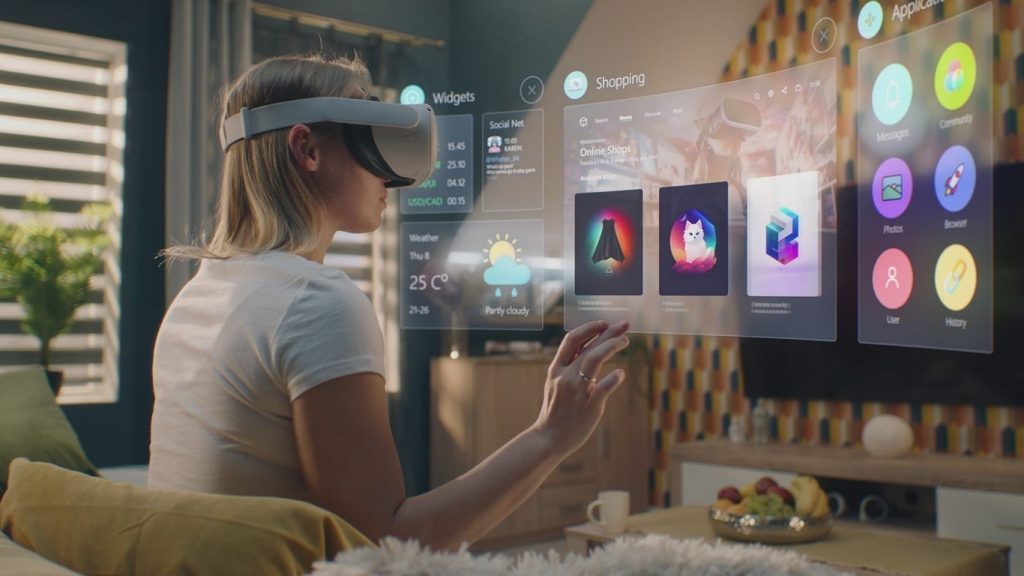
Low-code and no-code development
Low-code and no-code platforms are democratizing app creation by reducing the need for deep programming expertise. These tools let teams prototype and launch apps more quickly through drag-and-drop interfaces, pre-built modules, and automated backend setups. Designers benefit from rapid iteration, while developers can focus on complex logic instead of building basic features from scratch. However, customization can be limited, so high-performance or large-scale apps may still require full-code development. For startups and small businesses, low-code/no-code development significantly lowers barriers to entering the mobile market.
Frequently Asked Questions (FAQs)
What is the difference between mobile app design and mobile app development?
Mobile app design focuses on how the app looks, feels, and behaves from the user’s perspective. It includes UI layout, color systems, interactions, navigation, wireframes, and prototypes. On the other hand, development transforms these design assets into a working product through coding, backend setup, database integration, and implementation of functionality. Designers consider user experience, while developers focus on system logic and performance. Both roles collaborate closely to ensure the final app is visually appealing, intuitive, stable, and scalable.
How long does it take to design and develop a mobile app?
The timeline varies depending on the app’s complexity, features, and technology stack. Simple apps may take 2–3 months, while medium-complexity projects typically span 4–6 months. Large enterprise apps with custom integrations, advanced security, or multi-platform support can take 9–12 months or longer to develop. The process usually includes discovery, UX/UI optimization, development, testing, iterations, deployment, and maintenance. Team size, feedback speed, and scope changes also influence the overall duration.
How much does it cost to design and develop a mobile app?
Costs depend heavily on features, platform (iOS, Android, or both), technology choices, and design requirements. A basic app may range from $10,000 to $30,000. More sophisticated apps, such as e-commerce platforms or on-demand, often range from $40,000 to $150,000. Enterprise-level apps can exceed $200,000 due to the complexity of integrations, security needs, and custom architecture. Additional expenses may include cloud hosting, ongoing maintenance, updates, and third-party services like payment gateways or analytics tools.
Should I hire an in-house team or outsource mobile app design and development?
Both options have advantages depending on your goals, budget, and timeline. In-house teams offer long-term control, dedicated focus, and immediate communication, but require high hiring and operational costs. Outsourcing provides access to specialized talent, faster scalability, and lower overall expenses. Many businesses opt for hybrid models, keeping strategic roles in-house while outsourcing design or development to experienced agencies. The best approach depends on the complexity of our project and launch timeframe.
In today’s fast-paced digital world, mobile app design development is essential for businesses that want to stay competitive and deliver exceptional user experiences. By applying the right processes, tools, and best practices, you can build apps that are visually engaging, intuitive to use, and optimized for long-term scalability. A well-designed app not only enhances customer satisfaction but also strengthens your brand’s digital presence and business performance.
For organizations seeking expert support in creating high-quality mobile applications covering the full spectrum of mobile app design and development, TopOnTech (TOT) is ready to accompany you.
TOT is a pioneer in the digital transformation journey. We deliver website design, mobile app development, and custom software solutions with flexible services tailored to each business’s exact needs.
Inspired by the philosophy of “Technology for People,” TOT empowers businesses to operate more efficiently, elevate customer experiences, and build a lasting brand impression.
TopOnTech (TOT) Contact Information:
🌐 Website: https://topon.tech/en/
📞 Hotline/WhatsApp/Zalo: (+84) 906 712 137
✉️ Email: long.bui@toponseek.com
🏢 Address: 31 Hoang Dieu Street, Ward 12, District 4, Ho Chi Minh City, Vietnam
